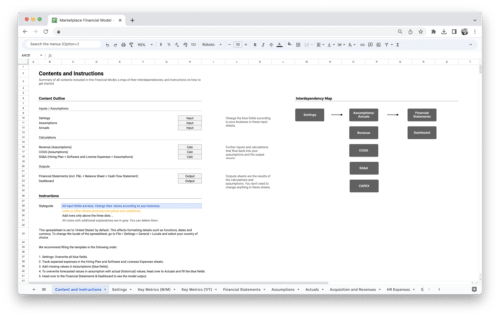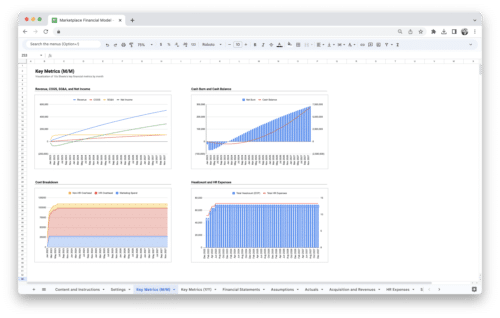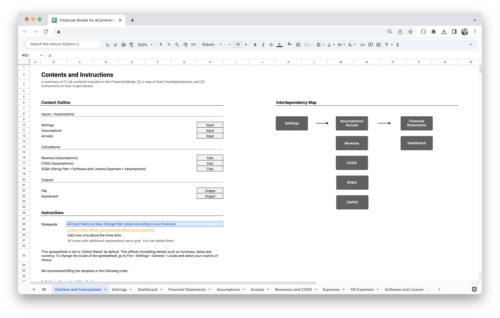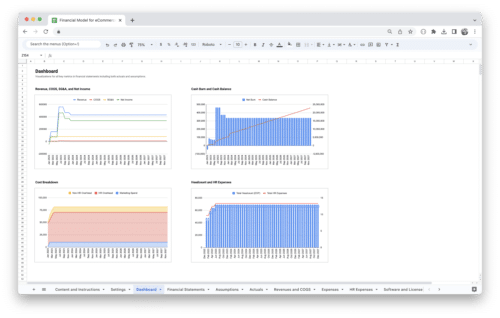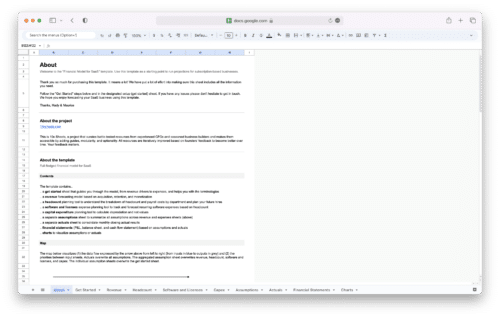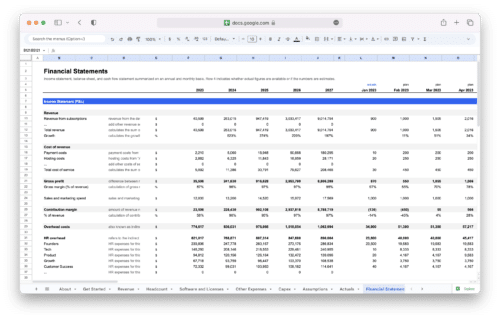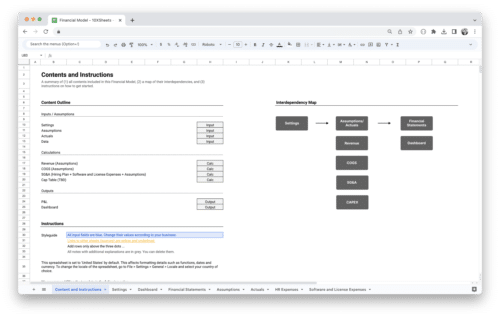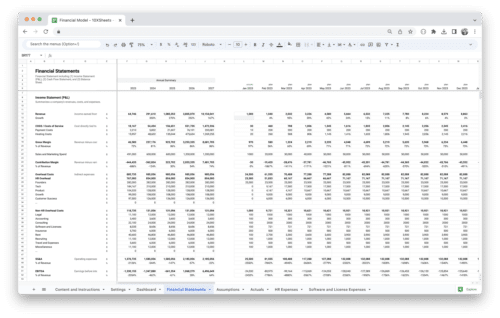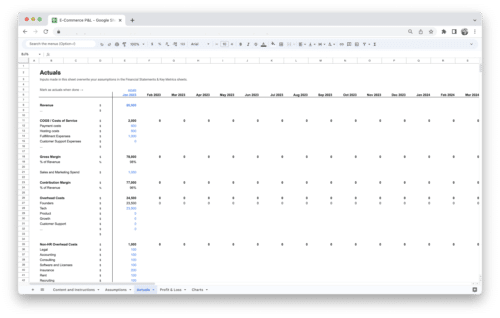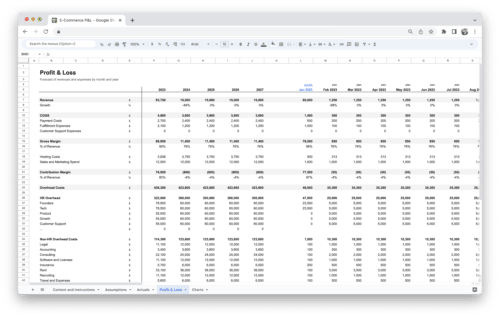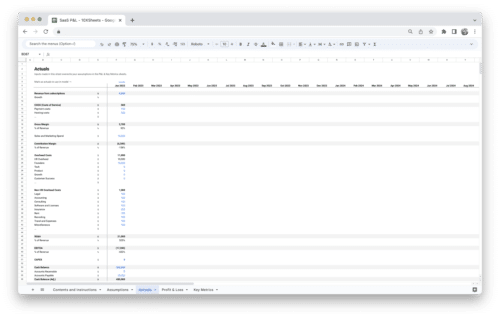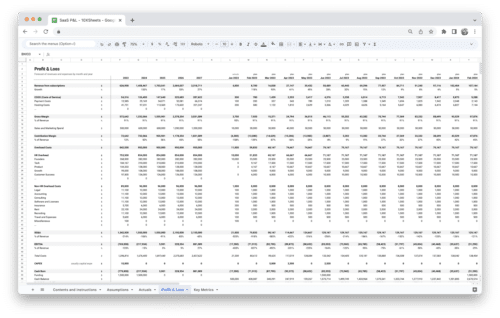
Ever wondered what makes a space truly functional and stylish? The answer often lies in the right combination of Furniture, Fixtures, and Equipment (FF&E). These elements go beyond simply filling a room—they shape how a space feels, how people move through it, and how well it serves its purpose. Whether you’re designing a hotel room, outfitting an office, or setting up a home, understanding FF&E is key to creating spaces that are both practical and aesthetically pleasing.
From comfortable furniture that invites relaxation to functional equipment that keeps things running smoothly, each piece plays a crucial role. This guide will walk you through everything you need to know about FF&E, how it impacts different industries, and how to choose the right pieces for any space.
What is FF&E?
FF&E, or Furniture, Fixtures, and Equipment, refers to the movable and fixed items within a building that contribute to its functionality and aesthetic appeal. It encompasses a wide range of products, including furniture that can be moved, fixtures that are permanently attached, and equipment that supports the operations of a space. While the term is often used in the context of the hospitality, commercial, or residential sectors, it applies across all industries where physical space and functionality are a priority.
The purpose of FF&E is not only to fill a space but to enhance its usability, comfort, and design. For instance, furniture like chairs and desks provide comfort and support, while fixtures like lighting and built-in shelving help to define the room’s atmosphere and flow. Equipment, on the other hand, facilitates operations, from appliances in a kitchen to technology in an office.
Each component of FF&E plays a unique role, and when thoughtfully selected, they create a cohesive and functional environment tailored to the specific needs of a space.
Importance of FF&E in Various Industries
FF&E is critical across multiple industries, each requiring tailored solutions for furniture, fixtures, and equipment based on their distinct functional, aesthetic, and operational needs. Here’s a snapshot of how FF&E supports different sectors:
- Hospitality: In hotels, resorts, and restaurants, FF&E impacts guest experience by providing comfort, functionality, and style. High-quality, durable furnishings contribute to guest satisfaction, while practical fixtures and equipment support operational efficiency in kitchens, lobbies, and service areas.
- Office Spaces: In commercial office environments, FF&E is designed to support productivity, employee well-being, and organizational efficiency. From ergonomic office chairs to collaborative meeting spaces, the right furniture and equipment ensure a functional and comfortable workspace.
- Retail: FF&E in retail settings enhances both customer experience and operational efficiency. Display units, shelving, and checkout counters are essential for showcasing products, while equipment like POS systems and lighting ensure smooth transactions and a positive shopping atmosphere.
- Residential: For homes, FF&E contributes to comfort and personal style. Furniture and fixtures like sofas, dining tables, and lighting enhance daily living, while equipment such as home appliances and smart devices improve convenience and functionality.
In every industry, FF&E is integral to achieving the right balance between aesthetics, functionality, and practicality, ensuring spaces are not only usable but enjoyable.
Overview of FF&E
FF&E is an essential aspect of every built environment, serving to enhance both the functionality and the overall experience. However, the specific needs and types of FF&E vary widely across different sectors. Here’s an overview of how each industry utilizes FF&E to meet its goals:
- Hospitality: Hotels and resorts use FF&E to create an inviting and comfortable atmosphere for guests. Luxurious furnishings like plush beds, armchairs, and stylish décor create a high-end experience, while functional fixtures like lighting, mirrors, and shelving ensure ease of use. Equipment such as minibars, in-room safes, and coffee machines are vital to providing guests with convenience.
- Office: In office settings, FF&E is focused on maximizing productivity and comfort. Desks, ergonomic chairs, and collaborative workspaces enhance the work environment, while technology like computers, printers, and conference equipment supports daily business activities. Fixtures such as built-in storage and lighting improve functionality and reduce clutter.
- Retail: FF&E in retail spaces is geared towards creating an engaging shopping experience. Shelving units, display tables, and clothing racks showcase products effectively, while fixtures like lighting, mirrors, and fitting rooms enhance the customer’s interaction with the space. Equipment like point-of-sale systems, security systems, and inventory management tools ensure smooth retail operations.
- Residential: In residential settings, FF&E provides comfort and style. Furniture such as couches, dining tables, and beds creates a functional and aesthetic living space. Fixtures like lighting, built-in cabinetry, and plumbing fixtures add to the home’s functionality, while equipment such as refrigerators, washing machines, and home entertainment systems improve daily living.
Each industry requires specific considerations for FF&E to create an environment that is both functional and aligned with the goals of the space. Whether it’s ensuring comfort for hotel guests or promoting productivity in an office, FF&E plays a key role in making any space work effectively.
The Role of FF&E
The role of FF&E in interior design goes beyond just filling a space; it serves as a vital element in creating an environment that works for its intended purpose while also enhancing the visual appeal of the area. Furniture, fixtures, and equipment are integral to the functionality, comfort, and aesthetics of a room, and they are often the defining elements of the space’s character.
- Interior Design Impact: Furniture and fixtures are often central to the overall design of a space, helping to define its style and ambiance. The selection of materials, colors, and textures in furniture and fixtures can evoke different moods, whether it’s creating a relaxing, luxurious hotel room or a dynamic, modern office. Furniture and fixtures can work together to create flow and balance, complementing the layout and maximizing space utilization.
- Functionality: FF&E ensures that a space works efficiently. Furniture like desks, chairs, and storage units provides the functional foundation of the space, allowing people to move around comfortably and complete tasks effectively. Fixtures like lighting and built-in shelving help define the space’s usability, making it practical for work, dining, or relaxation. Equipment is essential to performing the day-to-day activities of the space, whether it’s in a commercial kitchen, a home office, or a retail checkout area.
- Comfort: One of the primary roles of FF&E is to create a comfortable environment. Whether it’s choosing ergonomic office furniture, high-quality hotel beds, or stylish yet comfortable living room seating, FF&E directly affects how people interact with and experience the space. By carefully selecting pieces that offer both form and function, FF&E helps ensure that spaces are not only beautiful but also comfortable and enjoyable to use.
FF&E plays a central role in creating environments that balance beauty with practicality. Whether it’s to support business operations, enhance a customer’s shopping experience, or provide comfort and convenience at home, FF&E choices shape how people perceive and use the spaces they inhabit. Thoughtfully selected FF&E makes a lasting impact on both the functionality and design of a space, ensuring that it meets the needs of its users while creating an inviting atmosphere.
Components of FF&E
FF&E encompasses a broad range of items that fill a space, giving it both style and function. The components of FF&E can be broken down into four main categories: furniture, fixtures, equipment, and accessories. Each of these categories plays a distinct role in transforming a building or room into a space that works for its intended purpose while reflecting the style and comfort needed.
Furniture: Types and Categories
Furniture is one of the most important components of FF&E. It not only contributes to the aesthetics of a space but also affects its functionality. In general, furniture is designed to be movable, making it one of the most flexible elements when designing or renovating a space.
Common types of furniture include seating, tables, storage, and surfaces. These items can be categorized in a few different ways based on their function and usage:
- Seating: This category includes all the pieces meant for sitting, such as chairs, sofas, lounge chairs, stools, and benches. Whether you’re looking for a stylish lounge chair for a living room or ergonomic office chairs, seating plays an essential role in the comfort and utility of a space.
- Tables: Tables serve as central points in many spaces, providing surfaces for work, dining, or leisure. This category includes desks, dining tables, coffee tables, side tables, and conference tables. In offices, for instance, desks are not just for writing or working—they also need to be functional with ample storage and cable management.
- Storage: Cabinets, bookshelves, dressers, file cabinets, and credenzas fall under this category. Storage furniture can be designed to blend seamlessly into the space or stand out as a statement piece, depending on the design intention.
- Surfaces: Surfaces like countertops, vanity tops, and shelving units make a big difference in both function and form. These furniture elements offer both storage and aesthetic value. For example, built-in kitchen islands combine workspaces with storage, and open shelving units in living rooms offer display space for decor.
Each piece of furniture should be carefully selected to meet both functional needs and stylistic goals, with materials and finishes chosen to align with the overall design of the space.
Fixtures: What Are They and How They Differ from Furniture
While furniture is typically movable, fixtures are items that are permanently attached to a space. They become part of the building itself and cannot be easily moved or replaced. Fixtures are often installed during the construction or renovation process and contribute to the aesthetic as well as the functional aspect of a space.
Fixtures often include things like lighting, cabinetry, plumbing systems, and electrical outlets, all of which are essential for the usability of a room. For example, a kitchen’s built-in cabinets, plumbing fixtures like sinks and faucets, and electrical lighting are considered fixtures, as they are securely fastened or installed within the structure.
- Lighting Fixtures: These include pendant lights, chandeliers, sconces, recessed lighting, and wall-mounted lights. Lighting fixtures are essential not only for functionality but for creating ambiance. Different types of lighting (ambient, task, accent) can be used to enhance the atmosphere of a room, from soft lighting in bedrooms to bright task lighting in kitchens and offices.
- Built-in Furniture Fixtures: Items like kitchen cabinets, bookcases, and vanities are considered fixtures because they are built into the space. These fixtures are typically made to order, integrated with the architecture, and designed for long-term use.
- Plumbing Fixtures: Sinks, faucets, bathtubs, and showers are fixtures that are critical in kitchens and bathrooms. They need to meet specific functional requirements such as water efficiency, ease of maintenance, and durability.
While fixtures are not designed to be moved, they can be highly customizable in terms of design, materials, and finishes to ensure that they contribute to the overall aesthetics of the space.
Equipment: Tools, Technology, and Appliances That Make Spaces Functional
Equipment refers to items that are essential for the day-to-day operations of a space, often supporting tasks or providing necessary services. Unlike furniture or fixtures, equipment is typically more utility-focused and may vary greatly based on the industry or type of space. From kitchen appliances in a restaurant to high-tech gadgets in an office, equipment plays a major role in making spaces functional.
- Kitchen Appliances: In commercial kitchens, this category includes large equipment like ovens, refrigerators, dishwashers, and ranges, all of which are essential for food preparation and service. In homes, smaller items like microwaves, toasters, and coffee makers also fall under equipment.
- Office Equipment: In offices, this category includes tools that help employees perform tasks efficiently. Printers, computers, fax machines, projectors, and phones are all considered office equipment. These tools are indispensable for most businesses and need to be reliable and up-to-date to ensure smooth operations.
- Technology and Communication Devices: In modern spaces, technology is at the forefront of both office and residential equipment. This includes networking equipment like routers and servers, audiovisual systems for meetings or entertainment, and smart home devices like thermostats, lighting controls, and voice assistants.
- Medical Equipment: For healthcare settings, equipment can range from diagnostic machines like MRIs and x-ray machines to medical beds, wheelchairs, and other essential tools that ensure patient care is efficient, comfortable, and safe.
The importance of equipment cannot be overstated. Without the proper equipment, whether it’s a fully functioning coffee machine in a hotel or an efficient printer in an office, the space cannot meet its intended purpose.
Accessories: Decorative and Practical Items
Accessories add the finishing touch to any space, combining style with functionality. While furniture and fixtures are usually considered essential elements, accessories are what allow you to infuse personality, uniqueness, and visual appeal into a room. Accessories can range from purely decorative items to functional ones that improve the space’s usability.
- Decorative Accessories: Items like art, sculptures, rugs, curtains, pillows, and plants are often used to create a welcoming atmosphere and complement the overall design of a space. These accessories are typically chosen based on the style and tone of the room—whether it’s minimalist, bohemian, modern, or classic.
- Functional Accessories: Some accessories are both practical and decorative. For example, decorative storage boxes, lamps, and trays not only help organize and manage clutter but also serve as a design element in a room.
- Textiles and Fabrics: Items like cushions, throws, and draperies are not just for comfort—they also enhance the texture and feel of a space. Luxurious fabrics like velvet or silk can transform a space, making it feel cozy and refined.
- Personal Touches: Accessories can reflect the personal taste of the homeowner or business owner, creating an environment that feels unique and inviting. Personal touches, such as family photos or meaningful keepsakes, add a sense of warmth and character to the space.
Accessories are essential because they tie everything together. Even the most well-designed rooms can feel incomplete without the right accessories to balance the larger pieces of furniture and fixtures. When choosing accessories, it’s important to keep the overall aesthetic in mind, ensuring they enhance rather than overwhelm the space.
Each component of FF&E serves a unique purpose in making a space functional, comfortable, and stylish. Furniture offers flexibility and comfort, fixtures ensure permanence and functionality, equipment supports daily operations, and accessories provide personality and visual appeal. Together, these elements come together to create spaces that not only serve practical needs but also provide a pleasant environment.
FF&E Examples in Different Industries
FF&E plays a crucial role in defining the look and functionality of spaces across various industries. Whether it’s a hotel room, an office workspace, or a retail store, the right combination of furniture, fixtures, and equipment is essential for creating an environment that works well for its intended purpose. Let’s explore some real-world examples of how FF&E is applied in different sectors, highlighting its impact on both design and operational efficiency.
Hospitality: Hotels and Resorts
In the hospitality industry, FF&E is central to creating memorable experiences for guests while maintaining functionality for staff. The selection of furniture, fixtures, and equipment in hotels and resorts directly influences the comfort, aesthetics, and overall guest satisfaction.
- Furniture: A hotel room’s furniture often includes a comfortable bed, stylish armchairs, a desk for work, and a bedside table with lamps. In a resort, outdoor furniture like lounge chairs by the pool is essential for relaxation.
- Fixtures: Lighting is a key fixture in hotel rooms, with options ranging from task lighting at the bedside to mood lighting in the bathroom. Built-in shelves or closets offer guests convenient storage, while mirrors, wall art, and curtains contribute to the room’s aesthetic appeal.
- Equipment: Essential hotel equipment includes minibars, in-room safes, and coffee machines for guest convenience. In the back-end, equipment like commercial refrigerators and dishwashers in hotel kitchens ensures smooth operations for dining services.
The right FF&E choices in hospitality ensure that guests feel comfortable and cared for, while also supporting the efficient operation of the hotel or resort.
Office Spaces: Workstations and Meeting Rooms
In office environments, FF&E plays a significant role in enhancing productivity, employee well-being, and overall office aesthetics. Office furniture and equipment need to be functional, ergonomic, and adaptable to different work styles, from collaborative spaces to private workstations.
- Furniture: Ergonomic office chairs and adjustable desks are common in modern office spaces. Desks with built-in cable management and file storage ensure that employees have a clutter-free and functional workspace. Conference tables with comfortable seating facilitate meetings, while lounge areas with sofas and chairs help create informal, relaxed spaces for collaboration.
- Fixtures: Office lighting should be bright yet comfortable for long hours of work. Ceiling lights, task lamps, and recessed lighting ensure proper illumination. Fixtures like built-in shelving or whiteboards provide functional and space-efficient storage and collaboration tools.
- Equipment: Office equipment includes computers, printers, fax machines, and phones. In larger offices, additional equipment like projectors, interactive whiteboards, and videoconferencing systems enhance meetings and presentations. The integration of smart technology—such as automated lighting or temperature control systems—further improves office efficiency.
FF&E in offices needs to create a work environment that promotes focus, collaboration, and overall employee satisfaction. It must balance both aesthetics and functionality to support productivity.
Retail Environments: Showrooms and Stores
In retail settings, FF&E is designed to create an inviting, organized, and visually appealing space that enhances the customer experience. From display fixtures to checkout counters, each piece of FF&E plays a role in shaping how customers interact with the products and the brand.
- Furniture: Display racks, shelves, and mannequins help showcase products effectively, while seating in fitting rooms or near product displays encourages customers to linger. Cash register counters, display tables, and product stands all serve practical functions while contributing to the store’s design.
- Fixtures: Lighting in retail spaces is essential for highlighting products and creating the right atmosphere. Pendant lights, recessed lighting, and spotlights can be used to focus attention on specific areas of the store. Signage and branded fixtures also contribute to the store’s identity, guiding customers through the space and enhancing their shopping experience.
- Equipment: Point-of-sale (POS) systems, security cameras, and inventory management tools are critical for smooth store operations. In clothing stores, equipment like fitting room mirrors, garment hangers, and steamers ensure a high-quality shopping experience. In grocery stores or larger retailers, checkout systems, barcode scanners, and refrigerators or freezers are vital for daily operations.
In retail spaces, FF&E must serve dual purposes: it should create an appealing shopping environment while also supporting practical business needs.
Residential Spaces: Homes and Apartments
For residential interiors, FF&E is all about creating spaces that are comfortable, functional, and reflect the homeowner’s personal style. The selection of furniture, fixtures, and equipment must balance aesthetics with practicality to ensure that the space meets the everyday needs of its occupants.
- Furniture: Common furniture pieces in homes include sofas, dining tables, beds, chairs, and coffee tables. These pieces should be chosen to suit both the size of the space and the desired style, whether it’s a cozy, traditional living room or a sleek, modern dining area.
- Fixtures: Fixtures in residential spaces are crucial for both style and function. Bathroom fixtures like faucets, showers, and mirrors are key to creating a comfortable, efficient bathroom. In kitchens, built-in appliances such as refrigerators, ovens, and dishwashers are essential, while lighting fixtures throughout the home set the tone and mood in different rooms.
- Equipment: Household equipment includes everyday appliances like washing machines, dryers, microwaves, and refrigerators. In modern homes, tech-driven equipment such as smart thermostats, security cameras, and voice-activated assistants are also increasingly common.
In residential spaces, FF&E ensures that the home is both a functional living space and a place that reflects personal style and comfort.
Healthcare Environments: Hospitals and Clinics
Healthcare settings require specialized FF&E that balances functionality, hygiene, and comfort. Whether it’s a hospital room or a doctor’s office, the furniture, fixtures, and equipment must cater to the needs of both patients and medical professionals.
- Furniture: Hospital beds, patient chairs, and waiting room seating are designed for comfort, durability, and easy maintenance. Specialized medical furniture, such as examination tables and rolling carts, must be easily movable and accessible to healthcare workers while ensuring patient comfort.
- Fixtures: Healthcare fixtures include medical lighting, sinks, and built-in storage units for medical supplies. In patient rooms, fixtures like adjustable lighting allow for both general illumination and task lighting, while durable flooring ensures easy cleaning and infection control.
- Equipment: Medical equipment is critical to patient care and operational efficiency. Items such as diagnostic machines, IV stands, and patient monitors are essential to providing quality healthcare. Additionally, equipment like sterilizers, autoclaves, and medical carts helps maintain cleanliness and support healthcare staff.
FF&E in healthcare environments must be selected to support patient care, enhance safety, and ensure the smooth operation of medical facilities.
Each industry uses FF&E to create spaces that are functional, efficient, and in alignment with the specific needs of their users. Whether it’s luxurious hotel furniture, ergonomic office desks, or specialized medical equipment, the right combination of FF&E makes a significant impact on how a space works and feels. By understanding the unique requirements of each sector, you can better appreciate how critical FF&E is in shaping environments that not only look great but also serve their intended purpose effectively.
The FF&E Procurement Process
Procurement of FF&E involves more than just choosing items that look good—it’s a strategic process that requires careful planning, budgeting, and supplier coordination to ensure that the furniture, fixtures, and equipment meet the needs of the space, stay within budget, and align with the overall vision. From identifying the needs of the space to negotiating with suppliers and sourcing eco-friendly options, the procurement process is crucial for the successful execution of any design project.
Identifying Needs and Requirements
The first step in any FF&E procurement process is determining what is needed. This requires a thorough understanding of the project and the functional and aesthetic goals for the space. The needs of the space must align with its purpose—whether it’s for a hotel room, office, restaurant, or healthcare facility.
The process begins by consulting with interior designers, architects, project managers, or stakeholders to identify specific needs. For example, a luxury hotel may need high-end, durable furniture that is comfortable for guests, while an office may require ergonomic seating and desks for productivity. In healthcare settings, the FF&E needs might include specialized medical furniture that is both functional and easy to clean.
Assessing the number of items, their functionality, the available space, and their aesthetic requirements is key to making informed decisions. This also involves defining specific features and materials—such as comfort, durability, color, and style—that will be important for the project. For example, materials that are easy to clean and maintain may be crucial for a hospital room, while a restaurant might prioritize style and comfort for guest seating.
By clearly defining the needs and requirements from the start, you set a solid foundation for the procurement process and can avoid costly mistakes later on.
Budgeting and Cost Management
Once the needs are identified, budgeting is the next critical step in the procurement process. A well-defined budget ensures that you can meet your FF&E requirements without overspending, balancing the need for quality with cost-effectiveness. The budget should cover all aspects of FF&E procurement, including the cost of items, delivery, installation, and any additional fees or services like customization or specialized finishes.
Cost management is particularly important because FF&E can represent a significant portion of a project’s overall budget. It’s essential to balance your budgetary goals with your vision for the space. For example, you may need to make decisions about prioritizing certain items—perhaps investing more in high-quality furniture that sees heavy use, like office chairs or hotel beds, while opting for more affordable pieces in areas that won’t see as much wear and tear.
It’s also important to consider long-term costs, not just initial expenditure. Durability, maintenance, and the lifespan of the furniture, fixtures, and equipment should be factored into the budget. Choosing high-quality items may require a larger upfront investment, but these pieces may last longer and require less maintenance, saving money in the long run.
Additionally, it’s helpful to include a contingency fund in your budget to account for unexpected expenses. Having this buffer allows flexibility in case costs fluctuate or unexpected needs arise during the procurement process.
Supplier Selection and Vendor Negotiation
Choosing the right suppliers is a key part of the FF&E procurement process. Suppliers provide the products that will bring the vision to life, so selecting trusted vendors who can meet both quality standards and deadlines is crucial.
Start by researching suppliers who specialize in the type of FF&E you need. Look for those with a solid reputation, positive reviews, and a proven history of delivering on time and within budget. This is especially important when dealing with large-scale projects like hotels or commercial offices where multiple suppliers may need to be coordinated.
Once you’ve identified potential suppliers, the next step is vendor negotiation. Successful negotiation is about ensuring that you get the best value for your money without compromising on quality. This could involve negotiating prices, delivery schedules, and payment terms, or securing discounts for bulk orders or long-term contracts.
When negotiating, keep in mind the total cost of ownership, which includes delivery fees, taxes, installation costs, and any after-sales services such as warranties or maintenance. It’s also a good idea to ask suppliers about their lead times to ensure that the items can be delivered within the required project timeline. Effective negotiation ensures you stay within budget while obtaining high-quality FF&E that aligns with your project goals.
Building strong relationships with reliable suppliers can lead to long-term partnerships, providing you with better terms, priority access to products, and a smoother procurement process in future projects.
Sourcing Sustainable and Eco-Friendly Options
Sustainability is an increasingly important consideration in the FF&E procurement process. As environmental awareness grows, more businesses and individuals are looking to source furniture, fixtures, and equipment that have minimal environmental impact. Whether it’s through the use of eco-friendly materials, energy-efficient products, or ethical manufacturing processes, sourcing sustainable options is now a priority for many.
One of the first steps in sourcing sustainable FF&E is to prioritize materials that are renewable, recyclable, or made from recycled content. For example, furniture made from sustainably sourced wood or eco-friendly metals can be both durable and environmentally responsible. Additionally, manufacturers who use low-VOC (volatile organic compounds) paints and finishes contribute to better indoor air quality and a healthier environment.
Energy efficiency is also a significant factor in the procurement of equipment. Appliances and devices that have energy-saving features, like LED lighting, low-energy refrigerators, and water-efficient fixtures, help reduce the overall carbon footprint of the space.
It’s also crucial to consider the lifecycle of FF&E items—how long they last and whether they can be reused or recycled. Investing in durable, long-lasting products can reduce waste over time, as can opting for pieces that are modular and can be easily updated or repurposed.
When sourcing sustainable FF&E, it’s important to work with suppliers who are committed to environmental responsibility and transparency. Look for certifications like FSC (Forest Stewardship Council) for wood products or energy-efficient labels such as ENERGY STAR for appliances. Many suppliers now offer sustainable lines of products, which makes it easier to find eco-friendly options that meet both aesthetic and functional needs.
By sourcing sustainable options, you not only reduce the environmental impact of your project but also appeal to a growing demographic of eco-conscious consumers, clients, and employees. Sustainability in FF&E procurement is not just about ethical responsibility—it can also be a smart business decision that enhances your brand’s reputation and contributes to a healthier planet.
The FF&E procurement process is complex but essential for delivering successful projects. By carefully identifying needs, managing budgets, selecting reliable suppliers, and sourcing sustainable options, you can ensure that the furniture, fixtures, and equipment you choose will meet both functional requirements and aesthetic goals. The right procurement process also ensures that the project stays on track, on budget, and aligns with the overall vision for the space.
Project Management in FF&E
Managing FF&E projects requires careful attention to detail, as these projects often involve a variety of teams, tasks, and timelines that must be coordinated to ensure smooth execution. From selecting furniture, fixtures, and equipment to overseeing installation and ensuring that everything meets quality standards, the project manager plays a central role in bringing the vision to life. Effective project management is critical for delivering the final product on time, within budget, and to the highest standard.
Planning and Coordination Across Teams
Effective planning and coordination are the backbone of any FF&E project. The key to successful project management is ensuring that all teams—designers, contractors, suppliers, and installers—are aligned with the project’s goals, timelines, and expectations. This starts with an in-depth project plan that outlines every step, from initial concept design to final installation.
The planning process begins with understanding the specific needs of the space and establishing the goals of the project. Collaboration between architects, interior designers, and project managers is essential to determine the ideal FF&E pieces that fit within the design concept and functionality. By working together, these teams can ensure that the right pieces are selected and that they work harmoniously within the space.
Once the FF&E is chosen, it’s crucial to coordinate with suppliers, manufacturers, and delivery teams to align delivery schedules with construction and renovation timelines. Any delays in furniture or equipment delivery can throw off the entire project, making timely and organized planning essential. Moreover, communication with installation teams is vital, especially if custom or complex pieces need to be installed. Managing the logistics of where items are placed and when they are installed can prevent damage and ensure the space is set up efficiently.
Regular check-ins and updates across all teams help ensure that everyone is on the same page, preventing miscommunication and delays. A well-coordinated approach guarantees that FF&E items arrive on time, meet design specifications, and are installed seamlessly.
Delivery and Installation Logistics
The delivery and installation process can often be one of the most challenging aspects of an FF&E project. With multiple pieces arriving from different suppliers, it’s important to ensure that logistics are properly managed to prevent delays or errors. For large-scale projects, like outfitting a hotel or office building, multiple shipments may need to be coordinated at once, and tracking the delivery of each piece is essential to avoid confusion.
The first step is to confirm delivery schedules with suppliers and manufacturers. For international deliveries or items requiring special handling, it’s critical to have clear communication about timing, customs procedures, and any special requirements. When dealing with bulk orders or oversized items, it may also be necessary to arrange for specialized transportation, such as cranes or lifts for heavy or hard-to-move furniture pieces.
Once the furniture, fixtures, and equipment arrive on-site, careful inspection is necessary to ensure that all items are in good condition and meet the specifications. Any damaged items should be flagged immediately and addressed with the supplier or manufacturer to avoid delays in the installation process. It’s also a good practice to ensure that the installation teams have all the necessary tools and expertise for the task at hand, whether it’s assembling complex pieces of furniture, setting up high-tech equipment, or installing custom-built fixtures.
Installation should be carefully coordinated with the overall construction or renovation work to prevent disruptions. Ideally, the installation of FF&E should be one of the last steps in the process to avoid damage from ongoing construction, but this depends on the specifics of the project timeline.
By managing the logistics effectively, from shipment tracking to on-site installation, you can ensure that everything arrives on time, in good condition, and ready to be installed as planned.
Ensuring Quality and Compliance Standards
For any FF&E project, ensuring quality and compliance is crucial. This means not only confirming that each piece of furniture, fixture, and equipment meets the expected standards of functionality and durability, but also that it adheres to safety, health, and legal regulations. This is especially important in regulated industries like healthcare or education, where FF&E needs to meet strict standards.
Quality control starts with vetting suppliers and manufacturers who meet industry standards and offer certified products. This may include compliance with safety regulations, such as fire resistance, lead-free finishes, or child safety standards. Additionally, it’s important to verify that the materials used in the FF&E are durable enough for the expected use, whether that’s high-traffic commercial areas or specialized equipment for medical settings.
Once the FF&E is on-site, further checks are necessary to ensure that all items are in top condition. This includes inspecting the furniture for structural integrity, testing the equipment for functionality, and confirming that the fixtures are properly installed and aligned. In cases where custom or specialized FF&E is used, detailed inspections should be performed to verify that the design specifications have been met.
Compliance checks are also critical, particularly when dealing with regulations around accessibility, such as the Americans with Disabilities Act (ADA) in the U.S. or similar laws in other countries. It’s essential to ensure that furniture and fixtures are accessible to all users, and equipment is suitable for the intended purpose.
To maintain high standards of quality and compliance, project managers should conduct regular quality assurance checks throughout the procurement, delivery, and installation phases. By addressing issues early, you can prevent delays and ensure that the final result meets both regulatory and client expectations.
Managing Timelines and Deadlines
Time management is one of the most challenging aspects of FF&E project management. Coordinating the delivery and installation of furniture, fixtures, and equipment, while aligning everything with the overall project timeline, requires precise scheduling and flexibility.
Effective timeline management begins with a clear understanding of when each part of the project needs to be completed. This means defining milestones for each phase of the procurement, from selecting the FF&E to ensuring it’s delivered and installed. Project managers should create detailed schedules that include deadlines for supplier deliveries, installation dates, and final inspections.
Buffer time should also be built into the timeline to account for unforeseen delays, such as delivery issues or last-minute changes to the design. Having this flexibility ensures that the project stays on track even when challenges arise. Communication with all parties involved—designers, suppliers, contractors, and installation teams—is crucial to staying on schedule.
For larger projects, like outfitting an office building or hotel, project managers must coordinate multiple FF&E shipments and installation teams, often across different locations. This requires effective communication and precise scheduling to ensure that each team knows when their portion of the project begins and ends.
Staying on top of deadlines involves tracking progress against the timeline and addressing any delays or issues as soon as they arise. Project managers should have regular check-ins with all involved parties to ensure that any potential problems are identified early and solutions are implemented quickly.
Meeting deadlines ensures that the project is completed on time, which is crucial for businesses operating in fast-paced environments. Delays can lead to operational disruptions or increased costs, so maintaining tight control over the schedule is key to delivering a successful FF&E project.
Managing an FF&E project is a complex process that requires careful planning, coordination, and attention to detail. From ensuring all teams are on the same page to managing logistics, quality control, and deadlines, project managers must be proactive and organized to keep everything running smoothly. Effective project management ensures that FF&E is delivered on time, meets all expectations, and contributes to the overall success of the space.
FF&E Challenges
The procurement and management of FF&E often come with a variety of challenges, especially in large-scale projects or complex environments. Navigating these challenges successfully requires thorough planning, coordination, and flexibility. Several common hurdles arise throughout the FF&E process, and addressing them proactively can save time, reduce costs, and ensure a smoother project.
- Managing delays due to supply chain issues, long lead times, or stock shortages
- Ensuring consistency in quality and design across large quantities of items
- Staying within budget constraints while meeting high-quality and design standards
- Coordinating multiple vendors and suppliers to meet deadlines and specific requirements
- Handling logistical issues related to deliveries, including damaged goods, missed shipments, and transportation challenges
- Managing customization requests for bespoke pieces without delaying the project
- Adapting to unexpected changes in the design or scope of the project
- Complying with regulations and certifications (e.g., safety standards, accessibility requirements) across different industries and regions
- Balancing aesthetics with functionality, especially when working within space constraints or tight budgets
- Maintaining flexibility in the face of evolving design trends or client preferences
Addressing these challenges requires effective communication with all stakeholders, a solid understanding of the project’s needs, and the ability to adapt to unexpected issues as they arise. By staying organized and proactive, project managers can navigate these difficulties and deliver successful FF&E projects.
Sustainability in FF&E
Sustainability has become an important consideration in FF&E procurement. As more industries and consumers place emphasis on environmental responsibility, sourcing eco-friendly materials and products is not just a trend—it’s an expectation. Ensuring that FF&E is sustainable can help reduce a project’s carbon footprint and appeal to an environmentally conscious audience. Several key factors contribute to sustainable FF&E practices.
- Prioritizing the use of renewable, recyclable, or sustainably sourced materials like FSC-certified wood or recycled metals
- Choosing energy-efficient equipment and appliances to reduce long-term environmental impact
- Reducing waste through the use of modular furniture or items that can be easily repurposed or updated
- Partnering with manufacturers who adhere to environmentally friendly production processes and use low-impact finishes
- Selecting durable, high-quality pieces that will last longer and require less frequent replacement, thus reducing overall waste
- Using eco-friendly packaging materials during the transportation of FF&E
- Incorporating upcycled or repurposed furniture and fixtures to minimize the need for new resources
- Considering the full lifecycle of products, including their end-of-life disposal or recycling options
Sustainable FF&E choices benefit not only the environment but also contribute to a brand’s reputation, supporting the growing demand for more responsible practices. With careful consideration of environmental impact, the FF&E process can align both functional and aesthetic goals with sustainability efforts.
Conclusion
FF&E is more than just furniture and appliances—it’s about creating spaces that work. Whether it’s the comfortable seating in a hotel room, the efficient desks in an office, or the stylish shelving in a retail store, each piece of furniture, fixture, and equipment has a purpose. From ensuring comfort to supporting daily operations, the right FF&E choices can dramatically impact the functionality and atmosphere of any space. Understanding the unique needs of each environment, whether hospitality, commercial, or residential, is key to selecting the best FF&E to support both practical needs and design goals.
When managing FF&E projects, careful planning, budgeting, and supplier selection are crucial to success. By focusing on quality, sustainability, and functionality, you can create spaces that not only look good but also serve their intended purpose efficiently. As industries evolve and trends change, FF&E will continue to play an important role in shaping the environments where we live, work, and interact. With the right knowledge and approach, you can confidently tackle any FF&E project and create spaces that truly meet the needs of their users.
Get Started With a Prebuilt Template!
Looking to streamline your business financial modeling process with a prebuilt customizable template? Say goodbye to the hassle of building a financial model from scratch and get started right away with one of our premium templates.
- Save time with no need to create a financial model from scratch.
- Reduce errors with prebuilt formulas and calculations.
- Customize to your needs by adding/deleting sections and adjusting formulas.
- Automatically calculate key metrics for valuable insights.
- Make informed decisions about your strategy and goals with a clear picture of your business performance and financial health.

